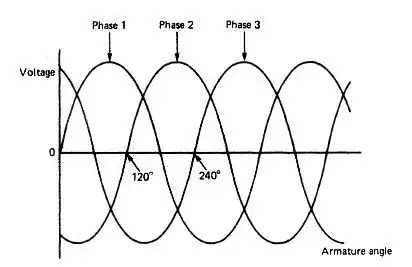Single phase is a phase related to the neutral. In Belgium that's 230V. But when you have three phases you can use them in relationship with the other phases, and then the voltage between phases is 400V (230V \$\times\$ \$\sqrt{3}\$).
Even at three phase you can use the 230V. You'll have 3 times the power available. That's called a star configuration. In delta you'll have 3 \$\times\$ 400V, that's 5.2 \$\times\$ the power at the same current.

Note that in the delta configuration the neutral isn't shown. In a perfectly balanced load the voltages (and their currents) add to a total of zero, so there won't flow any current through the neutral.

In a single phase the return current for each phase goes through the neutral.
You would typically use three phases when you need a lot of power, or to run synchronous motors.
One application is where I wired a 3-phase water boiler at 19A per phase. That's 22.8kW. If you would do that with a single phase you'd need to wire for 100A.
Until a few decades ago every house here would have three-phase power, and I remember my parents had a three-phase washing machine. Today you get just one phase, three-phase is optional, which you have to pay for. Like Olin says phases are staggered over neighboring houses so that the power of the three phases is more or less balanced. So I would have the "R" phase, my left neighbor the "S" and the other neighbor the "T" phase. I remember one time when there was a power-outage of just one phase in the whole neighborhood. Utilities don't like this because the generators are then unbalanced, and the neutral has to carry much more current than the nominal low value.
further reading
On this page is graphically explained how the currents in a three-phase system add to zero.

